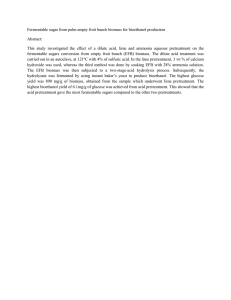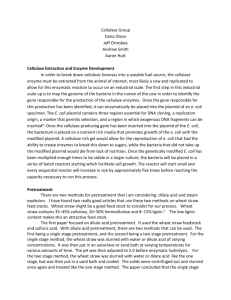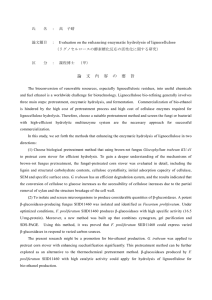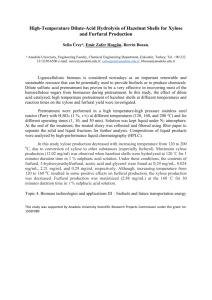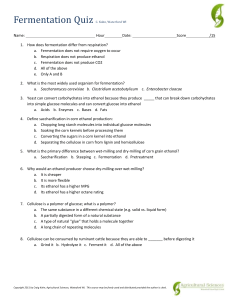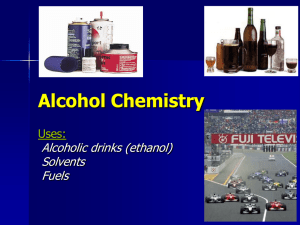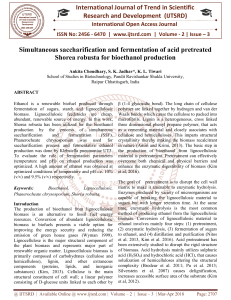Enzymatic Saccharification and Ethanol Fermentation of Hazelnut
advertisement
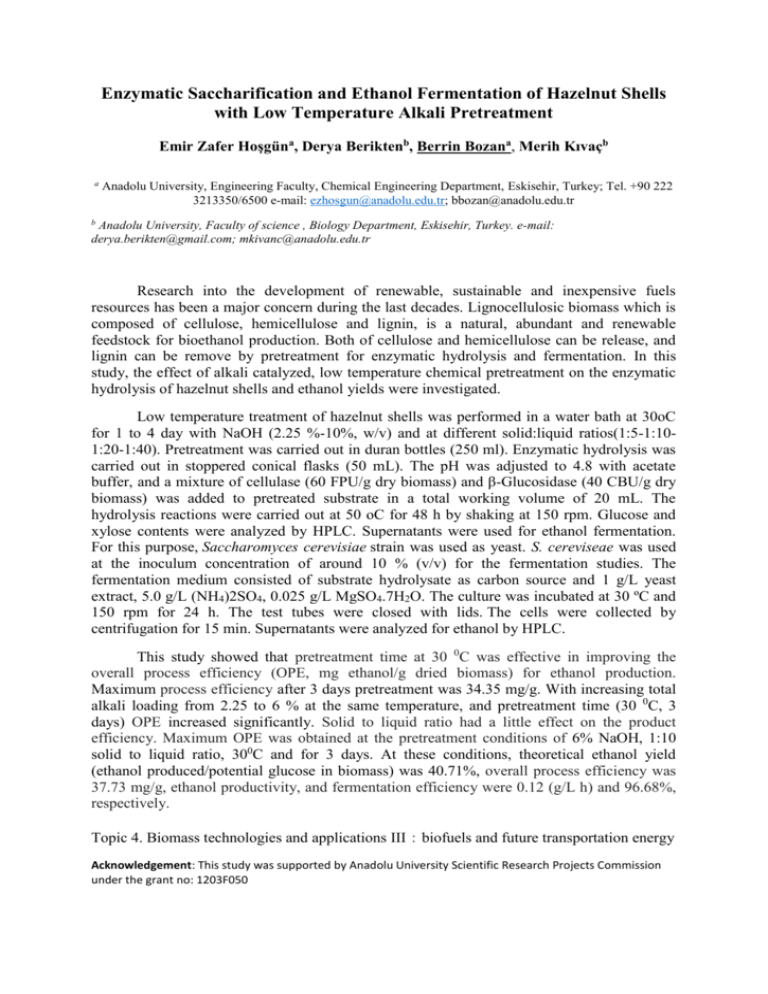
Enzymatic Saccharification and Ethanol Fermentation of Hazelnut Shells with Low Temperature Alkali Pretreatment Emir Zafer Hoşgüna, Derya Beriktenb, Berrin Bozana, Merih Kıvaçb a Anadolu University, Engineering Faculty, Chemical Engineering Department, Eskisehir, Turkey; Tel. +90 222 3213350/6500 e-mail: ezhosgun@anadolu.edu.tr; bbozan@anadolu.edu.tr b Anadolu University, Faculty of science , Biology Department, Eskisehir, Turkey. e-mail: derya.berikten@gmail.com; mkivanc@anadolu.edu.tr Research into the development of renewable, sustainable and inexpensive fuels resources has been a major concern during the last decades. Lignocellulosic biomass which is composed of cellulose, hemicellulose and lignin, is a natural, abundant and renewable feedstock for bioethanol production. Both of cellulose and hemicellulose can be release, and lignin can be remove by pretreatment for enzymatic hydrolysis and fermentation. In this study, the effect of alkali catalyzed, low temperature chemical pretreatment on the enzymatic hydrolysis of hazelnut shells and ethanol yields were investigated. Low temperature treatment of hazelnut shells was performed in a water bath at 30oC for 1 to 4 day with NaOH (2.25 %-10%, w/v) and at different solid:liquid ratios(1:5-1:101:20-1:40). Pretreatment was carried out in duran bottles (250 ml). Enzymatic hydrolysis was carried out in stoppered conical flasks (50 mL). The pH was adjusted to 4.8 with acetate buffer, and a mixture of cellulase (60 FPU/g dry biomass) and β-Glucosidase (40 CBU/g dry biomass) was added to pretreated substrate in a total working volume of 20 mL. The hydrolysis reactions were carried out at 50 oC for 48 h by shaking at 150 rpm. Glucose and xylose contents were analyzed by HPLC. Supernatants were used for ethanol fermentation. For this purpose, Saccharomyces cerevisiae strain was used as yeast. S. cereviseae was used at the inoculum concentration of around 10 % (v/v) for the fermentation studies. The fermentation medium consisted of substrate hydrolysate as carbon source and 1 g/L yeast extract, 5.0 g/L (NH4)2SO4, 0.025 g/L MgSO4.7H2O. The culture was incubated at 30 ºC and 150 rpm for 24 h. The test tubes were closed with lids. The cells were collected by centrifugation for 15 min. Supernatants were analyzed for ethanol by HPLC. This study showed that pretreatment time at 30 0C was effective in improving the overall process efficiency (OPE, mg ethanol/g dried biomass) for ethanol production. Maximum process efficiency after 3 days pretreatment was 34.35 mg/g. With increasing total alkali loading from 2.25 to 6 % at the same temperature, and pretreatment time (30 0C, 3 days) OPE increased significantly. Solid to liquid ratio had a little effect on the product efficiency. Maximum OPE was obtained at the pretreatment conditions of 6% NaOH, 1:10 solid to liquid ratio, 300C and for 3 days. At these conditions, theoretical ethanol yield (ethanol produced/potential glucose in biomass) was 40.71%, overall process efficiency was 37.73 mg/g, ethanol productivity, and fermentation efficiency were 0.12 (g/L h) and 96.68%, respectively. Topic 4. Biomass technologies and applications III:biofuels and future transportation energy Acknowledgement: This study was supported by Anadolu University Scientific Research Projects Commission under the grant no: 1203F050

